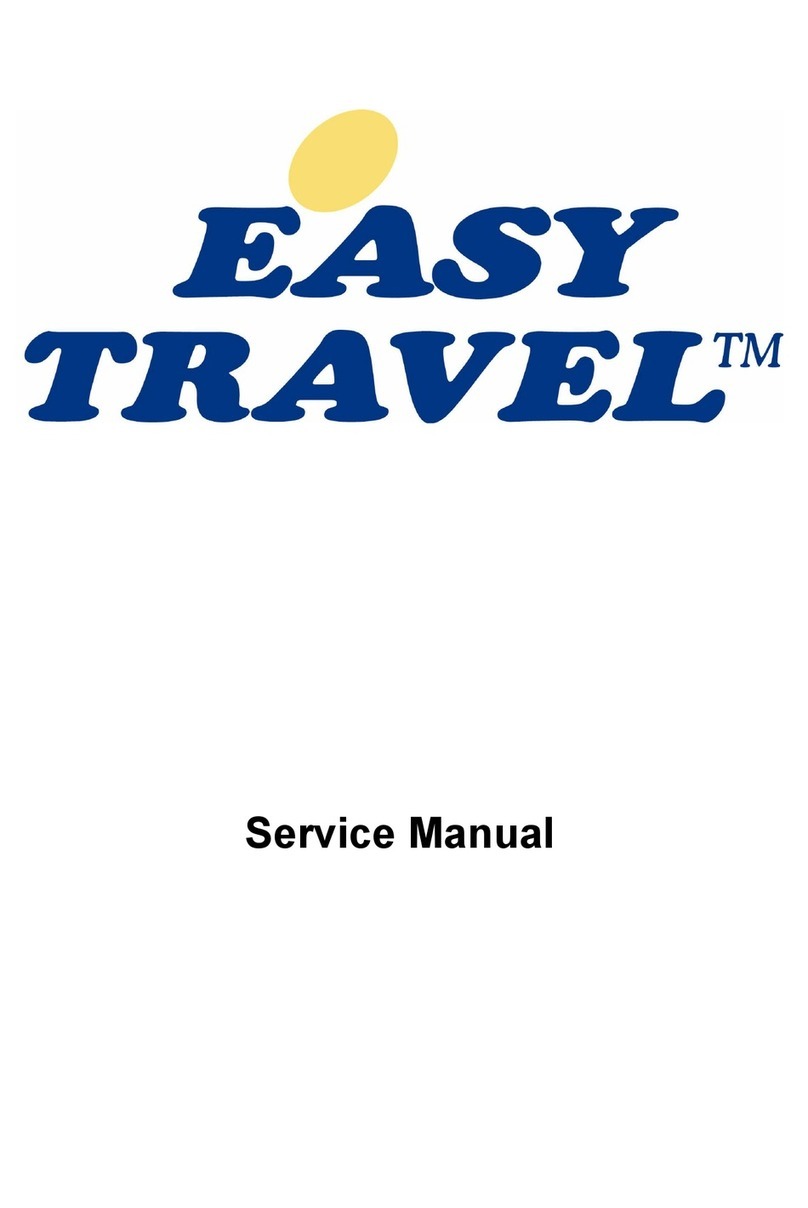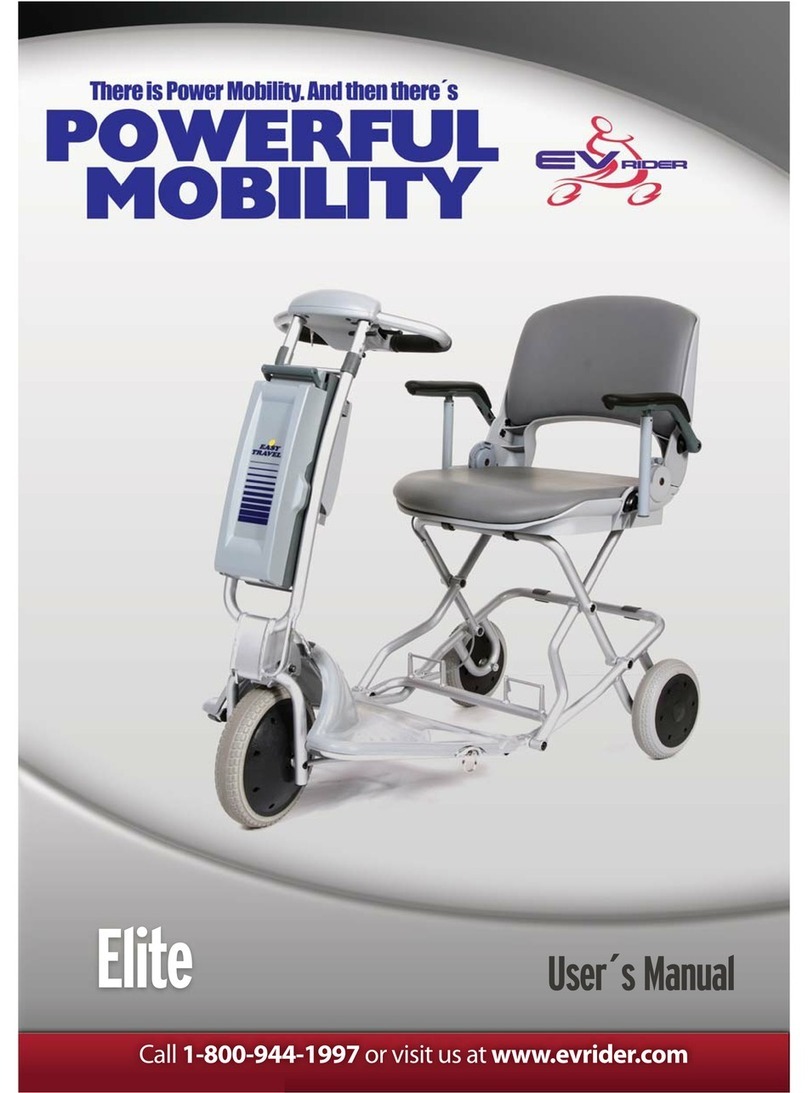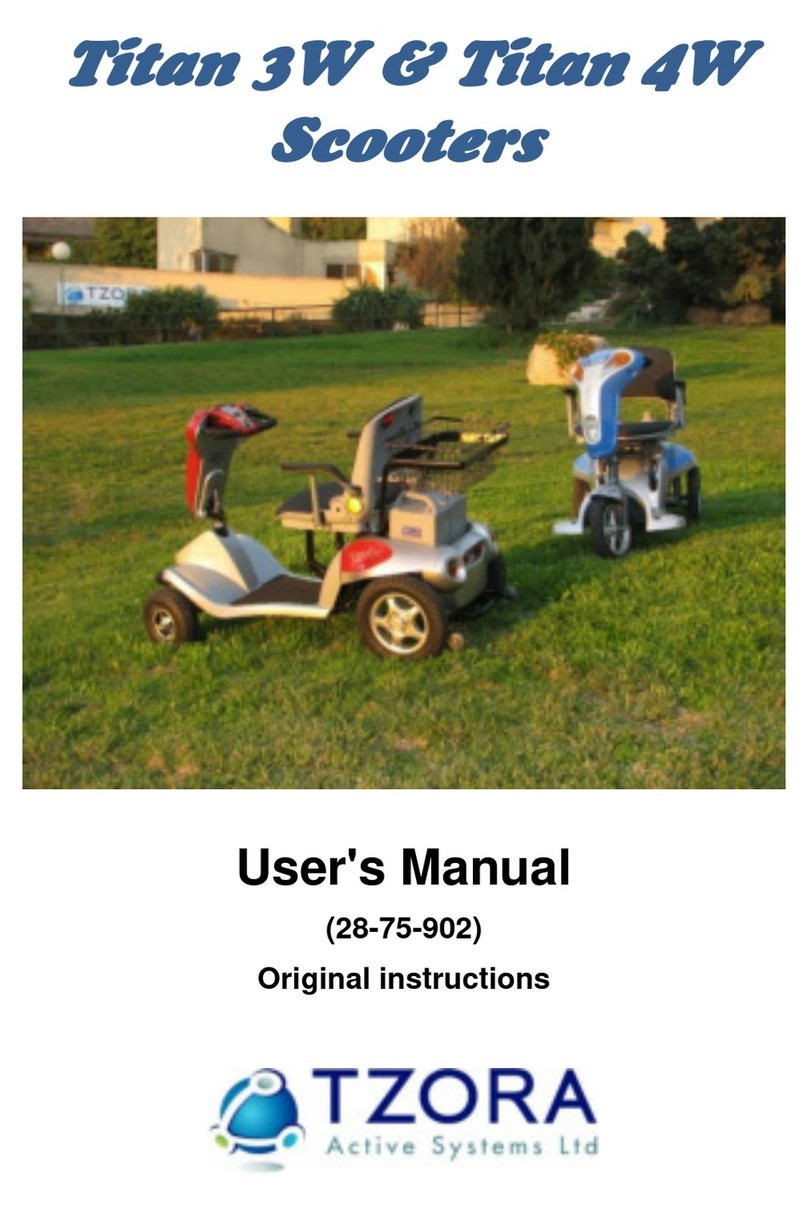
Titan 2 User Manual
Safety Instructions
Operation
These safety considerations and tips will help you operate the Titan safely.
The Titan is a powerful electric vehicle, and the following rules will help you
prevent personal injury and damage to your scooter.
■Make sure that your weight does not exceed the recommended weight
limit of the scooter. Do not carry passengers. (See Technical
Specifications table).
■Always ensure that the power is switched off, when getting on or off of
the scooter.
■When getting on and off the scooter, do not step on the foot rest.
■At all times while driving, keep your feet on the foot rest
■Be aware of the environment around you when choosing a desired
speed. For indoor environments, we recommend that you select the
slowest speed setting. For outdoor operation, select a speed that is
comfortable for you to control it safely.
■Reduce speed when making sharp turns.
■Do not switch off the power when the scooter is still moving forward.
This will bring the scooter to an extremely abrupt stop.
■Avoid jerky stop/start motions as it will result in excessive battery drain
and increased tire wear. To brake in an emergency, simply release the
forward/reverse lever.
■Make sure the wheel release lever is in driving mode prior to operation
(See Fig. 3.)
■Make sure the forward/reverse lever is in the proper position according
to your desired direction.




































